Excerpts from Jim Conrad's
Naturalist Newsletter
from the June 21, 2015 Newsletter issued from Río Lagartos, on the Yucatan Peninsula's northern coast (~N21.60°, ~W88.16°), Yucatán state, MÉXICO
AN OBSCURE CROTON
There's a certain kind of slender, often weedy or semi-weedy herb or semi-shrub commonly found in the Yucatan. It's a scrappy looking group of plants with smallish, often stiff-hairy leaves. Below, you can see what one looks like -- this one a bit larger and woodier than most species of the group -- in a weedy ditch along the road through the mangroves:
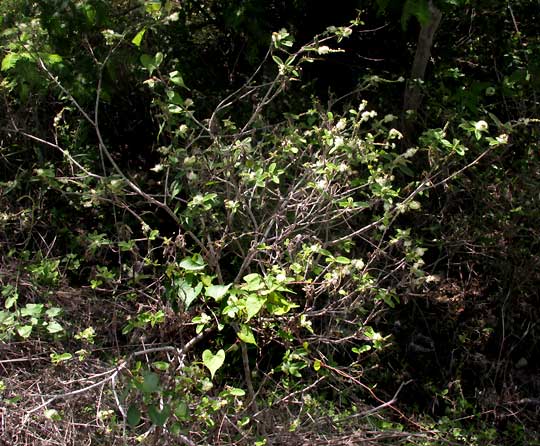
Nowadays this homely little plant draws attention to itself with modest clusters of male flowers, whose perky, white stamens show up when surrounded by nothing but greenness and shadows. A couple of flower clusters is shown below:
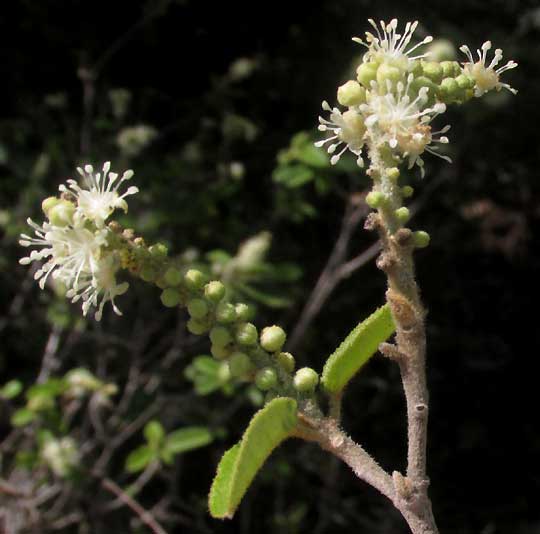
A closer look at the flowers, showing no hint of female parts, is seen below:
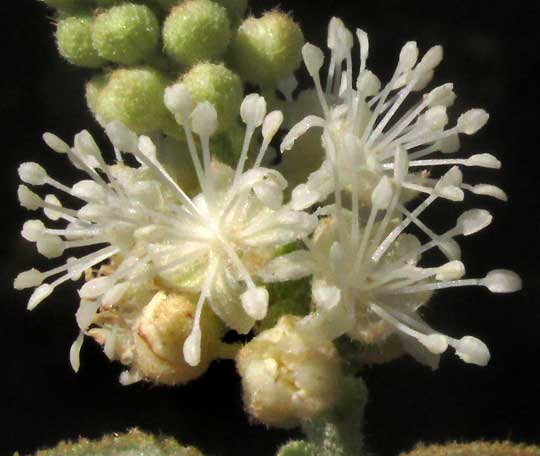
These flowers are very similar to flowers of others of this group. In this genus, you need to pay special attention to the vegetative parts. A leaf, broadest above its middle (obovate, a little unusual), and lobed at the base, with one lobe a little larger than the other, is shown below:
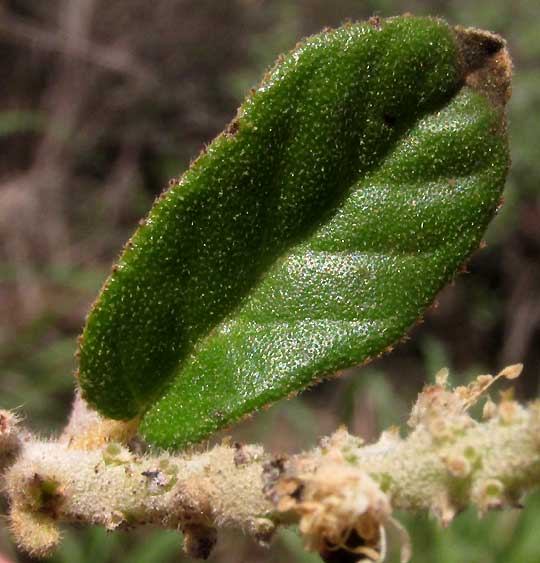
The leaf's undersurface is spectacularly white-hairy, and the short petiole bears especially long, stiff, brownish hairs, shown below:
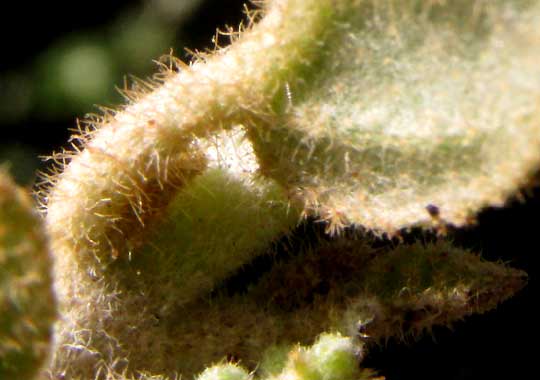
This genus, Croton of the Euphorbia or Poinsettia Family, is so commonly encountered and distinctive that it's easy to recognize. However, figuring out which species of Croton it is, is hard. Thirty-four species are listed for the Yucatan and there just doesn't seem to be any publications to help distinguish them.
My approach to ID our bush was to use Google's advanced image-search feature, in which I restricted my internet search to pages mentioning Croton, at the "Flora de la Península de Yucatán" website, sponsored by CICY, Yucatan's Center for Scientific Investigation, in Mérida. The Flora provides information and photos on most of the Yucatan's flowering plants, and it's of great help to me. The entry page for the Flora is at http://www.cicy.mx/sitios/flora%20digital/indice_busqueda.php
Google returned hundreds of images of CICY's Croton pictures. Only a few of the species bore leaves that sometimes were wider above their middles, and only a few bore leaves with white-hairy undersurfaces, and petioles with long, brownish hairs. In fact, I could find only one species matching our pictures, and that was CROTON PERAERUGINOSUS, endemic just to the Yucatan Peninsula, but apparently fairly common within our small area.
This is a clumsy way to identify plants, but when dealing with plants from this part of the world you just have to work with what you have. I'll park our pictures here under the Google-searchable keywords "Croton peraeruginosus," and eventually an expert will stumble upon them, be glad to have them, and maybe tell me whether this time we came up with the right name.